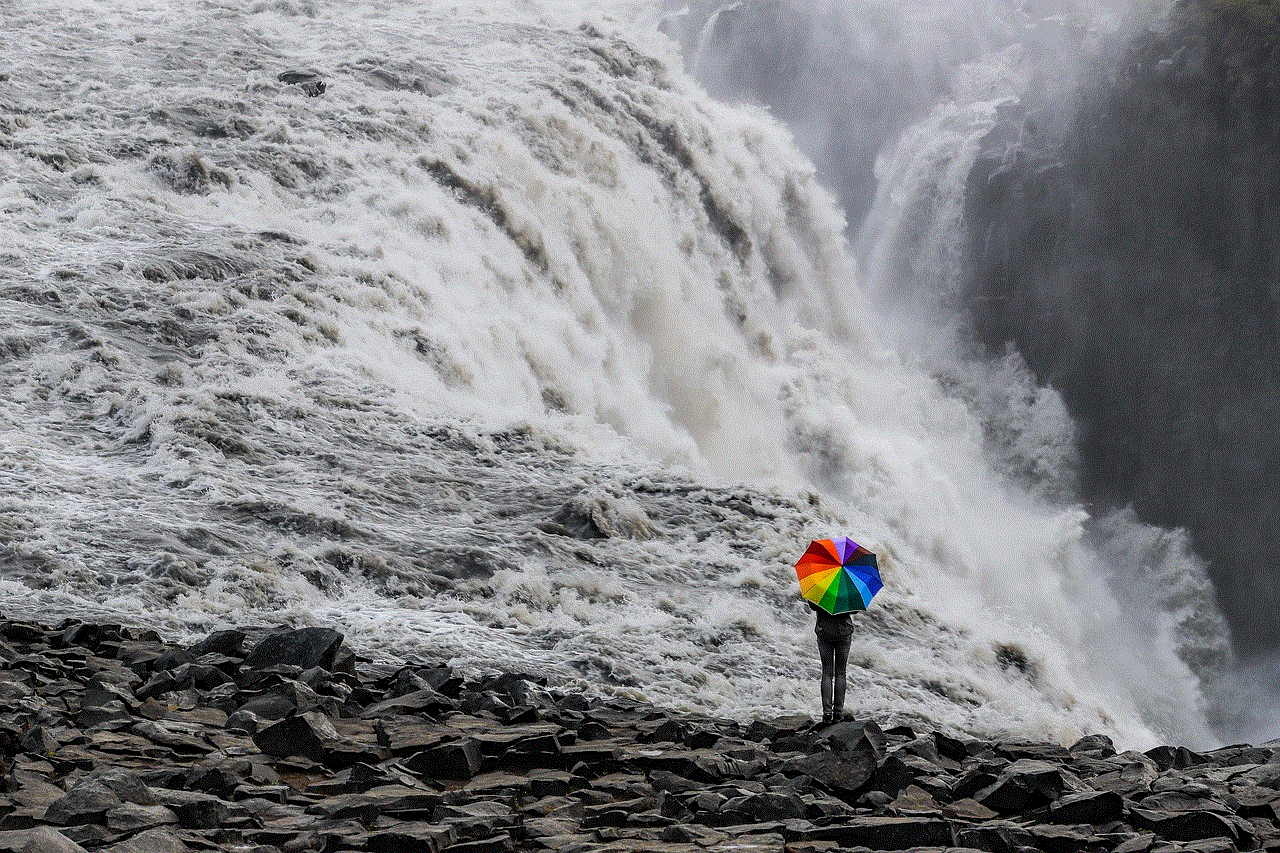kindle fire parental controls password
Kindle Fire Parental Controls: A Comprehensive Guide to Setting Up and Managing Passwords
Introduction:
As technology becomes an integral part of our daily lives, it is essential to ensure that children have a safe and secure digital experience. The Kindle Fire tablet, with its vast array of features and content, provides an excellent platform for educational and entertainment purposes. However, it is crucial for parents to have control over what their children can access. In this article, we will explore the Kindle Fire parental controls password and delve into the various settings and options available to ensure a secure and age-appropriate digital environment for your kids.
1. Understanding Kindle Fire Parental Controls:
The Kindle Fire offers robust parental control options that allow parents to monitor and control their child’s activities on the tablet. One of the key features of these controls is the password protection system. By setting up a password, parents can restrict access to various features, apps, and content, ensuring that their children only engage with appropriate material.
2. Setting Up a Parental Controls Password:
To set up a parental controls password on your Kindle Fire, follow these steps:
– Open the “Settings” menu on your device.
– Select “Parental Controls” from the list of options.
– Toggle the switch to turn on parental controls.
– Create a password that is unique and secure but easy for you to remember.
– Confirm the password.
– You can also enable the option to require the password for purchases and to restrict web browsing.
3. The Importance of a Strong Password:
When setting up a parental controls password, it is crucial to choose a strong password to protect your child’s digital experience. A strong password typically includes a combination of uppercase and lowercase letters, numbers, and special characters. Avoid using easily guessable passwords like birthdays or names, as these can be easily cracked. Remember to periodically change your password to ensure maximum security.
4. Controlling Access to Content:
With the parental controls password in place, parents can control their child’s access to various types of content on the Kindle Fire. By default, the tablet offers age-appropriate content filters based on the child’s age range. However, parents can customize these filters by accessing the “Content & Privacy” settings. Here, you can block specific types of content, such as books, videos, apps, and games, ensuring that your child only has access to suitable material.
5. Restricting Web Browsing:
To protect your child from inappropriate online content, you can enable web browsing restrictions on the Kindle Fire. When parental controls are active, you can choose to enable “Web Browser” restrictions, preventing your child from accessing the internet without your permission. Additionally, you can create a whitelist of approved websites or block specific websites that you deem inappropriate or unsafe.
6. Monitoring App Usage:
The Kindle Fire allows parents to monitor their child’s app usage through the “Activity Center” feature. By accessing the “Parental Controls” menu, you can review the apps your child has used and the amount of time spent on each app. This information can help you understand your child’s digital habits and make informed decisions about their screen time limits.
7. Time Limits and Usage Restrictions:
To promote a healthy balance between screen time and other activities, the Kindle Fire provides options for setting time limits and usage restrictions. By accessing the “Parental Controls” menu, you can define time limits for various activities, such as reading books, watching videos, or playing games. Once the time limit is reached, the tablet will automatically lock or restrict access to the specified activity.
8. Password Protection for Purchases:
Another critical aspect of Kindle Fire parental controls is the ability to password-protect purchases. By enabling this feature, you can ensure that your child cannot make unauthorized in-app purchases or buy content without your consent. When a purchase is attempted, the tablet will prompt for the parental controls password, preventing accidental or unauthorized transactions.
9. Safe Search and Filtering:
The Kindle Fire offers a safe search feature that allows parents to filter out explicit or adult content from search results. By enabling this setting, you can ensure that your child’s online searches are restricted to age-appropriate material. This feature is particularly useful when your child uses the tablet for educational purposes or research.
10. Resetting the Parental Controls Password:
In the event that you forget your parental controls password, you can reset it by performing a factory reset on the Kindle Fire. However, it is important to note that a factory reset will erase all data on the tablet, including apps, settings, and personal files. Therefore, it is recommended to store your password securely or use a password manager to avoid the inconvenience of a factory reset.
Conclusion:
In today’s digital age, it is crucial for parents to have control over their child’s digital experience. The Kindle Fire parental controls password is a powerful tool that allows parents to create a safe and age-appropriate environment for their children. By following the steps outlined in this article, parents can set up and manage their child’s Kindle Fire with confidence, ensuring that their children can enjoy all the benefits of technology while being protected from inappropriate content and unauthorized purchases.
show map in location alerts
Title: Enhancing Location Alerts with Interactive Maps: A Game-Changer for Navigation and Safety
Introduction:
The integration of maps in location alerts has revolutionized the way we navigate and stay informed about our surroundings. This article explores the significance of incorporating interactive maps into location alerts and how it improves our overall experience. By providing real-time visual information, these maps offer enhanced situational awareness, improved safety measures, and a seamless navigation experience.
1. Understanding Location Alerts:
Location alerts are notifications that inform users about their proximity to a specific area or event. These alerts can be generated through various mediums like mobile apps, smart devices, or web-based platforms. Traditionally, location alerts are delivered through text-based notifications, offering limited information. However, the inclusion of interactive maps elevates the functionality of these alerts to a whole new level.
2. The Power of Visual Information:
Maps are powerful tools that provide visual representations of our surroundings. By integrating maps into location alerts, users gain access to a wealth of visual information, including landmarks, streets, and points of interest. This visual context enables users to quickly understand their location and surrounding areas, making it easier to navigate and make informed decisions.
3. Real-time Updates:
Maps in location alerts offer real-time updates, ensuring users receive accurate information about their immediate surroundings. Whether it’s traffic congestion, road closures, or nearby points of interest, these maps provide up-to-date data, enabling users to plan their routes accordingly. Real-time updates also enhance safety as users can avoid potential hazards or dangerous areas.
4. Improved Situational Awareness:
Integrating maps into location alerts greatly enhances situational awareness. Users can visualize their location in relation to nearby landmarks, roads, or buildings, enabling them to better understand their surroundings. This enhanced awareness can prove invaluable in emergency situations or when navigating unfamiliar areas, as users can quickly identify nearby resources or alternative routes.



5. Personalized Navigation Experience:
Maps in location alerts allow for personalized navigation experiences. Users can customize their maps to display specific information based on their preferences and needs. For example, users can toggle between different map layers such as traffic, public transportation, or satellite imagery, tailoring the map to suit their specific requirements.
6. Enhanced Safety Measures:
Incorporating maps into location alerts enhances safety measures by providing users with vital information about their surroundings. For example, during severe weather conditions, users can receive alerts about storm paths or flood-prone areas, enabling them to take necessary precautions. Likewise, in high-crime areas, users can be alerted and advised to take alternative routes, ensuring their safety.
7. Integration with Augmented Reality:
The integration of maps with augmented reality (AR) technology takes location alerts to a whole new level. AR overlays digital information onto the real world, allowing users to see relevant details in their immediate surroundings. By combining maps with AR, users can access real-time information about nearby attractions, restaurants, or even historical landmarks, enhancing their overall experience and making navigation more engaging.
8. Improving Accessibility:
Maps in location alerts can also improve accessibility for individuals with disabilities. By providing visual representations of the environment, users with visual impairments can benefit from auditory or tactile feedback, enhancing their understanding of their surroundings. Additionally, users with cognitive disabilities can find it easier to navigate through visual cues provided by the interactive maps.
9. Integration into Smart Devices and Wearables:
With the rise of smart devices and wearables, the integration of maps in location alerts has become even more accessible and convenient. Users can receive location alerts directly on their smartphones, smartwatches, or other wearable devices, making it effortless to stay informed about their surroundings. This integration provides a seamless user experience, allowing users to access maps and location alerts without needing to switch between devices.
10. Conclusion:
In conclusion, the integration of interactive maps into location alerts has transformed the way we navigate and stay informed about our surroundings. By providing real-time updates, enhancing situational awareness, improving safety measures, and personalizing the navigation experience, maps in location alerts have become an indispensable tool for users worldwide. As technology continues to advance, we can expect further innovations in this field, making location alerts even more accurate, informative, and interactive.
how to know if someone blocked you on kik 2021
Title: How to Know If Someone blocked you on Kik in 2021
Introduction (150 words)
——————————
In today’s digital era, social media platforms have become an integral part of our lives. Kik Messenger is one such platform that allows users to connect with friends, family, and even strangers through text messages, photos, and videos. However, sometimes you may suspect that someone has blocked you on Kik. This article will guide you through the various signs and methods to determine if someone has indeed blocked you on Kik in 2021.
Paragraph 1: Understanding Kik Blocking (200 words)
———————————————————
Before diving into the signs and methods to determine if someone has blocked you on Kik in 2021, it is essential to understand what blocking means on Kik. When someone blocks you on Kik, it means they have restricted your access to their profile and communication. Once blocked, you won’t be able to send messages, view their profile, or see their online status. It is a way for users to control who can interact with them on the platform.
Paragraph 2: Testing Your Messages (200 words)
————————————————-



One of the primary ways to determine if someone has blocked you on Kik is by testing your messages. If you suspect someone has blocked you, try sending them a message. If the message shows a “D” (delivered) but never changes to an “R” (read), it could indicate that you have been blocked. However, it is crucial to consider other factors such as the recipient’s internet connection or device issues that may cause the delay in message status.
Paragraph 3: Profile Picture and Status Changes (200 words)
————————————————————-
Another significant sign to watch out for when trying to determine if someone has blocked you on Kik is changes in their profile picture and status. If you had previously seen their profile picture and it suddenly disappears or changes, it could be an indication of being blocked. Additionally, if their status updates are no longer visible to you, it is likely that you have been blocked. However, it is essential to consider that these changes could also occur due to the user’s personal preferences or privacy settings.
Paragraph 4: Online Status Disappearance (200 words)
——————————————————-
The disappearance of someone’s online status is another strong indicator that you may have been blocked on Kik. If you could previously see their online status, but it no longer appears, it is likely that you have been blocked. However, it is essential to consider that the user may have disabled their online status or changed their privacy settings, which could also explain the disappearance.
Paragraph 5: Public Groups and Private Chats (200 words)
———————————————————–
If you suspect someone has blocked you on Kik, you can try joining public groups they are a part of and see if their username appears in the list of members. If their username is not listed, it could be an indication of being blocked. Additionally, if you had previously engaged in private chats with the person but can no longer find those conversations, it may suggest that you have been blocked. However, it is crucial to consider that the user may have left the group or deleted their conversations.
Paragraph 6: Profile Search and Bot Accounts (200 words)
———————————————————-
Another method to determine if someone has blocked you on Kik is by searching for their profile. If the person’s username does not appear in the search results, it could be an indication of being blocked. However, it is essential to consider that the user may have deactivated or deleted their account. Additionally, be aware that some accounts on Kik may be bots or fake profiles, so it is crucial to cross-verify with other signs before concluding that you have been blocked.
Paragraph 7: Mutual Friends and Common Groups (200 words)
———————————————————–
If you have mutual friends or are part of common groups on Kik, you can reach out to them and inquire about the person you suspect has blocked you. Ask them if they can see the person’s profile, messages, or online status. If they report that they can still interact with the person while you cannot, it is a strong indication that you have been blocked. However, it is essential to consider that the user may have restricted their profile visibility only to a select few.
Paragraph 8: Temporary Server Issues (200 words)
————————————————–
In some cases, you may suspect that someone has blocked you on Kik due to issues with the platform’s servers. Kik Messenger, like any other app, can experience temporary glitches or server problems. If you are unable to send messages or access someone’s profile, it is advisable to wait for some time, clear your cache, or reinstall the app. If the issue persists even after these steps, it is more likely that you have been blocked.
Paragraph 9: Additional Considerations (200 words)
—————————————————
When trying to determine if someone has blocked you on Kik, it is essential to consider other factors before drawing conclusions. Technical issues, account deactivation, or privacy settings can sometimes cause similar indicators as blocking. It is crucial not to jump to conclusions and cross-verify with multiple signs before assuming that you have been blocked. Additionally, it is crucial to respect other users’ decisions and privacy on the platform.
Conclusion (150 words)



—————————-
In conclusion, determining if someone has blocked you on Kik in 2021 can be challenging, but not impossible. By observing signs such as undelivered messages, changes in profile pictures and status, disappearing online status, absence from public groups and private chats, missing profiles in searches, lack of interaction with mutual friends, and considering temporary server issues, you can make an educated guess. However, it is crucial to remember that these signs are not foolproof and should be considered collectively. It is vital to respect others’ decisions and privacy on social media platforms like Kik and maintain a healthy online environment.
0 Comments